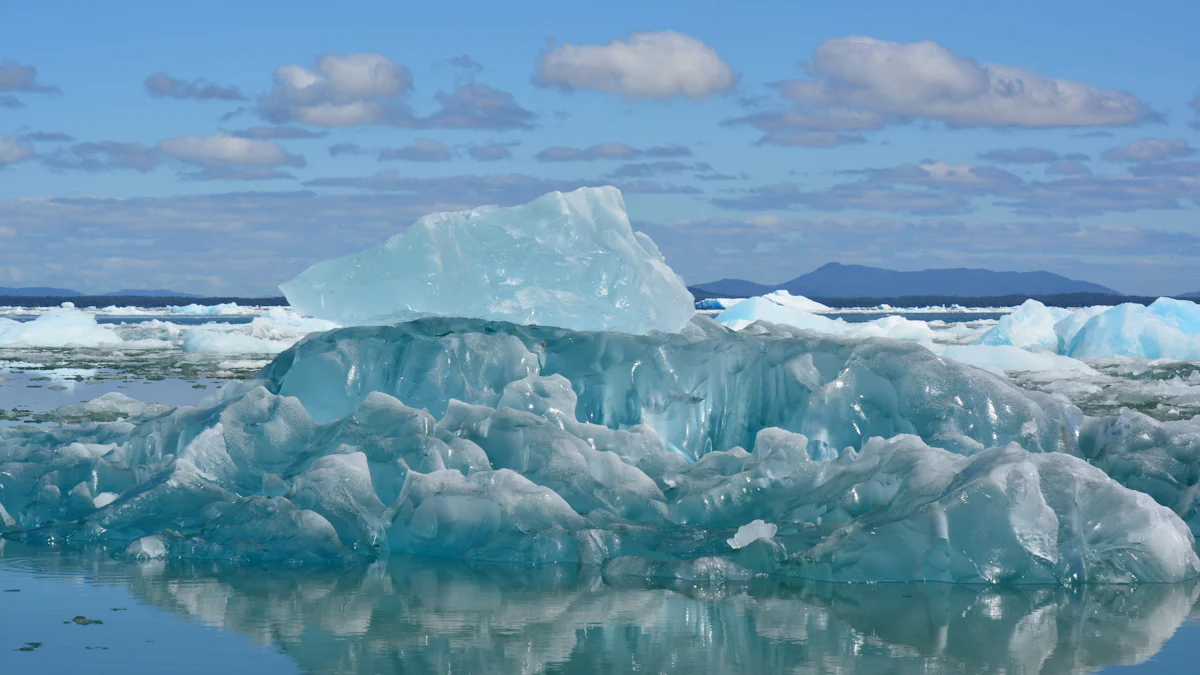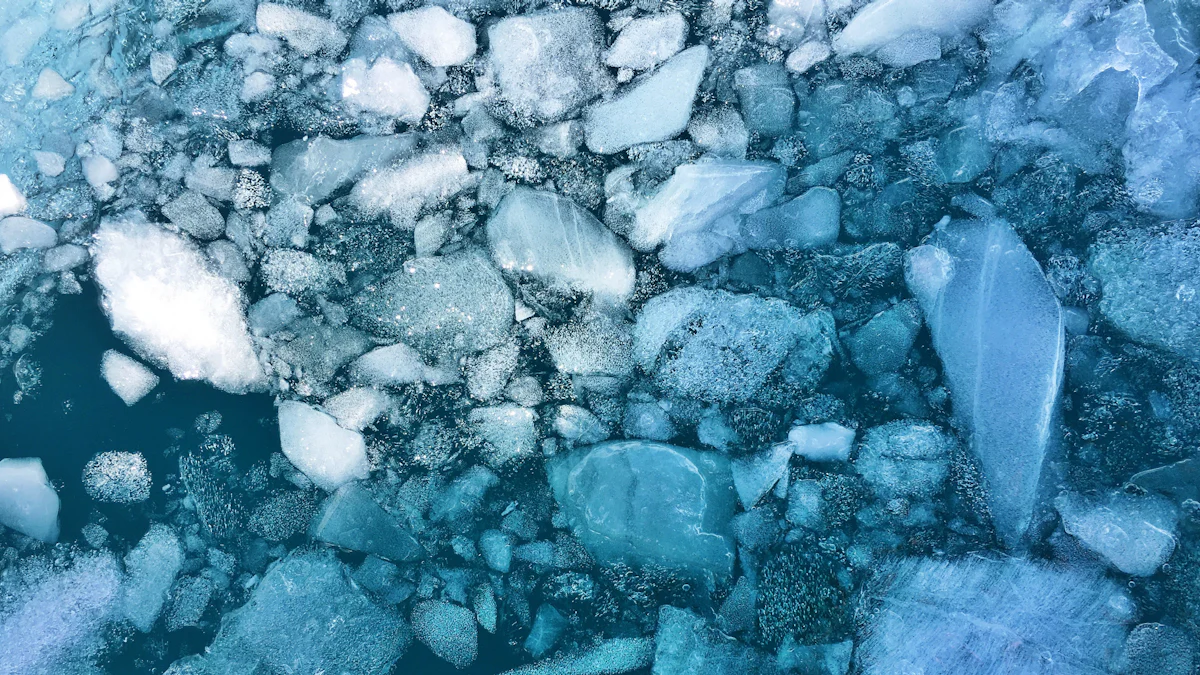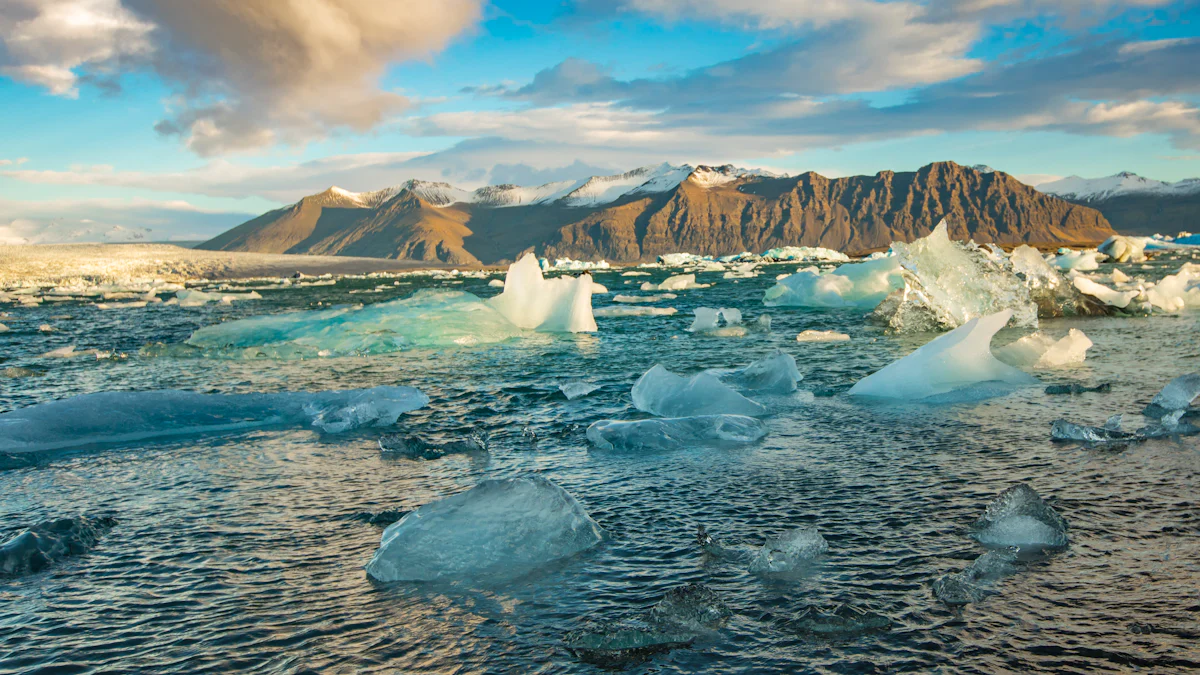Seawater Ice Making: Advanced Methods and Technologies

Seawater Ice Production has revolutionized the fishing industry by offering innovative methods to preserve catch quality. You can now use advanced technologies to create ice slurry with up to 60% ice content, ensuring maximum preservation without harming delicate fish. These cutting-edge techniques not only enhance the efficiency of ice production but also provide significant benefits across various applications. From maintaining the freshness of seafood to supporting sustainable practices, seawater ice making plays a crucial role in modern industries, offering both economic and environmental advantages.
Seawater Ice Production: General Methods
Traditional Techniques
Overview of historical methods
In the early 19th century, the ice trade began to flourish, thanks to pioneers like Frederic Tudor. You might find it fascinating that ice was once cut directly from ponds and streams. Workers stored this natural ice in ice houses before transporting it to destinations worldwide. In Norway, the process initially involved moving ice directly from lakes to ships. However, as demand grew, ice houses became essential, allowing for year-round exports. These methods laid the groundwork for what we now know as Seawater Ice Production.
Limitations of traditional techniques
While these historical methods were groundbreaking at the time, they had significant limitations. You would notice that the reliance on natural ice sources restricted production to colder climates and seasons. Additionally, the quality of ice varied greatly, depending on environmental conditions. Transporting large blocks of ice over long distances also posed challenges, often resulting in substantial losses due to melting. These constraints highlighted the need for more reliable and efficient methods.
Modern Innovations
Introduction to modern methods
Today, Seawater Ice Production has evolved dramatically. You can now utilize advanced technologies that surpass traditional methods in both efficiency and reliability. Modern innovations include machines capable of producing flake, block, and tube ice directly from seawater. These machines use sophisticated refrigeration cycles to ensure consistent ice quality. The introduction of supercooled water dynamic ice making and scraped surface double tube evaporators represents a leap forward in technology.
Advantages over traditional techniques
Modern methods offer numerous advantages over their traditional counterparts. You benefit from the ability to produce ice in a variety of forms, tailored to specific industrial needs. These technologies allow for precise control over ice temperature and salinity, enhancing preservation capabilities. Moreover, modern equipment reduces energy consumption and minimizes environmental impact. By embracing these innovations, industries can achieve greater efficiency and sustainability in Seawater Ice Production.
Types of Ice Produced

In Seawater Ice Production, you encounter various types of ice, each serving distinct purposes. Understanding these types helps you choose the right ice for your needs.
Flake Ice
Characteristics and uses
Flake ice stands out for its thin, flat shape. You find it ideal for quick cooling because it covers surfaces evenly. This type of ice is soft and moldable, making it perfect for preserving delicate items like seafood. In Seawater Ice Production, flake ice maintains a consistent temperature, ensuring freshness.
Benefits in various industries
Flake ice benefits numerous industries. In the fishing industry, it keeps fish fresh without causing damage. You also see its use in the food processing sector, where it cools products rapidly. Additionally, flake ice plays a role in concrete cooling, preventing cracks during curing. Its versatility makes it a valuable asset in Seawater Ice Production.
Block Ice
Production process
Block ice involves a straightforward production process. You freeze seawater in large molds, creating solid blocks. This method ensures durability and long-lasting cooling. In Seawater Ice Production, block ice provides a reliable option for extended storage.
Applications and advantages
Block ice finds favor among fishermen worldwide. Its solid form allows for easy transportation and storage. You can use it in remote areas where refrigeration is limited. Block ice also serves as a cooling agent in industrial settings. Its ability to maintain low temperatures over time makes it indispensable in Seawater Ice Production.
Tube Ice
Unique features
Tube ice features a cylindrical shape with a hollow center. This design allows for efficient cooling and easy handling. In Seawater Ice Production, tube ice machines produce uniform pieces, ensuring consistent quality.
Industry-specific benefits
Tube ice offers specific advantages in various industries. In the beverage sector, you use it to chill drinks without diluting them. Its shape allows for even cooling, enhancing the drinking experience. In the seafood industry, tube ice preserves freshness while minimizing waste. Its unique features make it a preferred choice in Seawater Ice Production.
Technical Aspects of Manufacturing
In Seawater Ice Production, understanding the technical aspects of manufacturing is crucial. You need to focus on the equipment and machinery involved, as well as energy consumption. These factors play a significant role in ensuring efficient and sustainable ice production.
Equipment and Machinery
Key components and functions
When it comes to Seawater Ice Production, the equipment and machinery you use are vital. Ice flakers, for instance, are essential components. They create high-quality flake ice, which is ideal for preserving seafood. The Ice Flakers from Howe are known for their durability and flexibility. They produce the highest quality flake ice, which is crucial for maintaining the freshness of your catch. These machines operate with lower maintenance requirements, making them a reliable choice for continuous ice production.
The machinery used in Seawater Ice Production often includes advanced refrigeration systems. These systems cool seawater efficiently, transforming it into various forms of ice. You will find that modern machines can produce flake, block, and tube ice, each serving different industrial needs. The key to successful ice production lies in the precise control of temperature and salinity, ensuring consistent ice quality.
Maintenance and efficiency
Maintaining your equipment is essential for efficient Seawater Ice Production. Regular maintenance ensures that machines operate at peak performance, reducing the risk of breakdowns. You should schedule routine checks to identify any potential issues early. This proactive approach minimizes downtime and extends the lifespan of your machinery.
Efficiency in Seawater Ice Production also depends on the design of your equipment. Machines that are energy-efficient not only reduce operational costs but also minimize environmental impact. By choosing equipment with lower energy consumption, you contribute to sustainable practices in the industry.
Energy Consumption
Factors affecting energy use
Energy consumption is a critical consideration in Seawater Ice Production. Several factors influence how much energy your equipment uses. The type of machinery, the scale of production, and the ambient temperature all play a role. Machines that produce ice at lower temperatures typically consume more energy. However, advancements in technology have led to more energy-efficient designs.
The location of your production facility can also impact energy use. Facilities in warmer climates may require more energy to maintain the desired ice temperature. Understanding these factors helps you make informed decisions about your equipment and production processes.
Strategies for optimization
To optimize energy consumption in Seawater Ice Production, you can implement several strategies. First, invest in energy-efficient machinery. Modern machines often come with features that reduce energy use without compromising ice quality. You should also consider using renewable energy sources, such as solar or wind power, to offset your energy needs.
Another strategy involves optimizing your production schedule. By producing ice during off-peak hours, you can take advantage of lower energy rates. Additionally, regular maintenance of your equipment ensures that it operates efficiently, further reducing energy consumption.
Benefits of Seawater Ice

Environmental Impact
Sustainability considerations
Seawater ice production offers significant sustainability benefits. You can harness the vast supply of seawater to produce ice, reducing the need for freshwater resources. This approach supports environmental conservation by minimizing freshwater usage. Additionally, seawater ice machines often operate with energy-efficient technologies, further promoting sustainable practices. By choosing seawater ice, you contribute to a more sustainable future.
Reduction of carbon footprint
Producing ice from seawater can help reduce your carbon footprint. Modern seawater ice machines, like those from Arkref, use advanced refrigeration systems that consume less energy. This efficiency translates to lower greenhouse gas emissions. Moreover, the ability to produce ice on-site reduces the need for transportation, which further decreases carbon emissions. By opting for seawater ice, you play a part in mitigating climate change.
Economic Advantages
Cost-effectiveness
Seawater ice production proves to be cost-effective for many industries. You can produce ice directly from seawater, eliminating the need for expensive freshwater sources. This method reduces operational costs, especially for fishing vessels that require large quantities of ice. The initial salt content of seawater ice, typically 2–3%, ensures effective preservation without excessive salt uptake by fish. This efficiency translates to savings in both time and resources.
Market demand and growth
The demand for seawater ice continues to grow across various sectors. Industries recognize the benefits of using seawater ice for preservation and cooling. Fishing vessels, in particular, rely on seawater ice slurry to maintain the quality of their catch. This demand drives innovation and growth in the seawater ice market. As more businesses adopt these advanced methods, you can expect continued expansion and opportunities in this field.
Considerations for Quality and Experience
Quality Control Measures
Standards and regulations
In seawater ice production, adhering to standards and regulations ensures high-quality output. You must follow guidelines that govern the production process to maintain consistency and safety. These regulations often include specifications for equipment, production methods, and ice quality. By complying with these standards, you guarantee that your ice meets industry requirements and customer expectations.
"Regulations of specific interest to mariners dealing with shipping in the Canadian Arctic" highlight the importance of adhering to guidelines in challenging environments. Such regulations ensure that the ice produced is suitable for use in various conditions, maintaining its integrity and effectiveness.
Ensuring product consistency
Consistency in product quality is crucial for customer satisfaction. You achieve this by implementing rigorous quality control measures throughout the production process. Regular testing and monitoring help identify any deviations from the desired standards. By maintaining consistent ice quality, you build trust with your customers and enhance your reputation in the industry.
User Experience
Ease of use and accessibility
User experience plays a significant role in the success of seawater ice production. You should focus on making your equipment easy to use and accessible to all users. This involves designing intuitive interfaces and providing clear instructions for operation. By prioritizing ease of use, you ensure that your customers can efficiently produce and utilize seawater ice without complications.
"Seawater is more corrosive than pure water and can cause pitting and crevice corrosion." This highlights the need for durable and user-friendly equipment that can withstand the harsh conditions of seawater ice production. By choosing robust machinery, you enhance the user experience and minimize maintenance issues.
Customer satisfaction and feedback
Customer satisfaction is a key indicator of success in seawater ice production. You should actively seek feedback from your customers to understand their needs and preferences. This feedback helps you identify areas for improvement and tailor your products to better serve your audience. By valuing customer input, you foster loyalty and drive continuous improvement in your offerings.
Advanced methods and technologies in seawater ice making have transformed industries by enhancing efficiency and sustainability. You see the importance of these innovations in preserving resources and reducing environmental impact. The future of seawater ice making holds promise for further advancements. As you explore new techniques, you contribute to a more sustainable world. Rapid and sustained reductions in greenhouse gas emissions are crucial to prevent an ice-free Arctic. Embrace the potential for innovation and continue to push boundaries in this field. Your efforts can lead to significant breakthroughs and positive change.
See Also
Indispensable Flake Ice Machines for Industrial Needs
Innovative Transcritical Refrigeration Units in ARKREF CO₂ Project
Overcoming Freezing Challenges with Tunnel Freezer Technology
ARKREF's 3 Groundbreaking CO₂ Transcritical Refrigeration Projects

